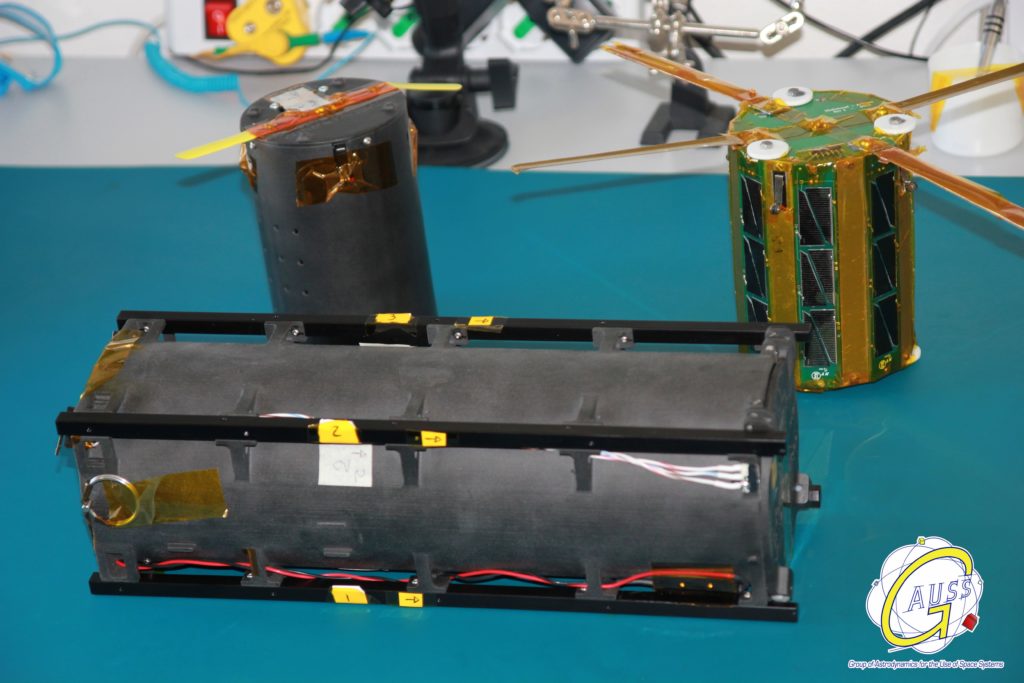We know they are up there. Sending signals, collecting information. Put into space by powerful entities, using the latest technology. I’m talking, of course, about satellites. But before you go wrapping your head in tinfoil to block out their signals, the powerful entities I’m speaking of are national space programs and the International Space Station. Or at least, they were. In recent years, however, the power to put a satellite in orbit has been made available to a wider number of people as costs to create them have diminished in keeping with their reduction in size and the normalization of their components.
This generation of nanosatellites began with the CubeSat, developed in 1999 by researchers at California Polytechnic State University and Stanford University, and until 2013, academia was the primary driver behind the launches of these satellites. After 2013, more than half of the launches were for non-academic purposes and by the following year, nearly all of them were either for commercial or amateur projects. The popularity of the CubeSat paved the way for the development of the TubeSat. All the volume with less overall mass should mean that tubing is the way of the future, but there has been one problem in moving from cube to tube and this is the lack of the necessary technology to deploy them from the ISS (International Space Station).As made obvious by the name, the CubeSat is a cube and the TubeSat is a cylindrical tube. What this difference in shape means is that the mechanism for deploying them cannot accommodate both forms. The inability of the CubeSats deployer platform (P-POD) to release tubular satellite led a group of Brazilian students to work with the Italian company GAUSS Srl (Group of Astrodynamics for the Use of Space Systems) in order to be able to launch their TubeSat TANCREDO-1. GAUSS in turn teamed up with Teton Aerospace in California and together they were able to create a system that met the rigid mechanical properties for space applications, avoided traditional tooling challenges, and could board and release two TubeSats. The system, named the TuPOD, was printed by CRP USA. The design of the device was described by Stewart Davis, Director of Operations at CRP USA:
In order to create such a device, the researchers turned to 3D printing, both for the prototyping and for the production of the final design. This allowed them to iterate more quickly and to respond easily to the stringent and unique requirements of aerospace design. They chose to use Windform XT 2.0, originally developed as a material for use in Formula 1 racing, which allowed them to produce a structure 40% lighter than an equivalent one made of aluminum while still being strong enough to withstand the extreme conditions associated with launch. As explained by designer of the TuPOD, and co-founder of Teton Aerospace, Amin Djamshidpour:“The deployment device for most CubeSats in called a P-Pod. This device is square, and can deploy structures that fit within its constraining devices that are the 4 corners. The rails that were placed on TuPOD were in part to allow a ’round peg to fit properly in the square hole’.”
The TuPOD was released from the ISS at a slightly lower orbit and, after a delay of about 3 1/2 days, deployed the TubeSat payload. Tracking the TuPOD was made possible by the transmission of a beacon signal available for reception by the amateur radio community. This signal remained active for four days and then, batteries depleted, the TuPOD burned up as it re-entered the Earth’s atmosphere. Chantal Cappelletti, the Project Manager at GAUSS, discussed the overall success of the mission:“Using Windrom XT 2.0 material in the 3D manufacturing of TuPOD was one of the best decisions we have made. Windform XT 2.0 is an electrically conductive material and machine-able. During the prototyping phase and even the final manufacturing, we got into multiple situations that we needed to drill the part or make small modifications to hthe 3D printed structure and working with Windform XT 2.0 gave us the ability to do so.”
“TuPOD mission was scheduled to work up to one week…Since the system was not equipped with solar cells, it was impossible to survive more than a few days. We can consider the TuPOD mission itself a great success since it sent messages for more time than was expected. During the mission, Windform XT 2.0 has passed all the flight qualification tests in complex systems [such as] the International Space Station. This achievement, unimaginable until recently, opens many perspectives on the possibility of using Windform materials for space applications.”
What do you think of this news? Let us know your thoughts; join the discussion of this and other 3D printing topics at 3DPrintBoard.com or in the comments below.
SaveSave
Subscribe to Our Email Newsletter
Stay up-to-date on all the latest news from the 3D printing industry and receive information and offers from third party vendors.
You May Also Like
Rickie Fowler Spotted with Cobra’s New 3D Printed Lob Wedge at American Express Tournament
Cobra has been at the forefront of 3D printed golf equipment since 2018. Now, its newest 3D printed golf club, a 60 degree lob wedge, was recently spotted in Rickie...
Snarr3D Introduces the First 3D Printed Golf Club Shaft
What started out as a class project could soon help golfers save a few strokes per round. Brothers and business partners, Patrick and Scott Snarr, have created Snarr3D, a golf...
GE Additive and Callaway’s 3D Printed Putter Heralds Sea Change in Sporting Goods
As golf giants Cobra and PING explore new ways to incorporate additive manufacturing (AM) into their production lines, it’s worth acknowledging that Callaway has been exploring the technology since at...
Review: Cobra 3D Printed Putter Improves 3DPrint.com CEO’s Golf Game
In our latest product review, Alan Meckler, CEO of 3DPrint.com’s parent company, 3DR Holdings, had the opportunity to test out one of Cobra Golf’s 3D printed putters, made using HP’s...


































